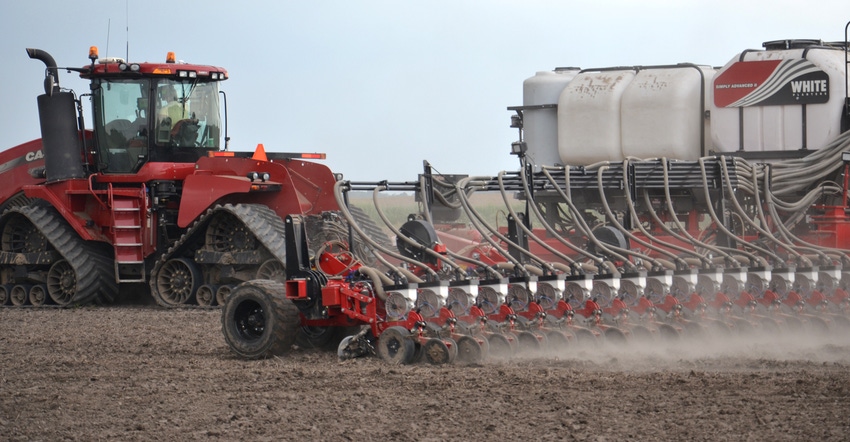
Farmers started noticing “tall corn, short corn syndrome” around 1980. There wasn’t always an obvious pattern. Gary Steinhardt, a Purdue University Extension agronomist, was among the first to publicly say the cause was soil compaction, created by working soils too wet with large machinery.
Forty years later, soil compaction is still a threat to corn yields. In fact, there’s likely more potential to create deeper soil compaction today than before.
“There are two key reasons,” says Mark Jeschke, agronomy manager for Pioneer. “Farm machinery is much heavier today, creating larger axle loads.
“Plus, the general trend is toward more rainfall events, especially in the spring. These events tend to be more intense than in the past.” The 2019 season was a prime example, when many people felt they had no choice but to run on wet soils.
Machinery size
To prove his point, Jeschke tracked down the weight of a tractor that might have been used for tillage 40 years ago, 30 years ago, 15 years ago and today. He chose Case IH models. Manufacturing dates and weights are courtesy of tractordata.com.
The average weight of the International Harvester 1086, made from 1976 to 1981 and often operated with single tires, was 12,715 pounds. The Case IH Magnum 7130, manufactured from 1987 through 1993 and more likely to be equipped with duals and mechanical front-wheel drive, was 17,540 pounds. The Case IH Magnum MX-285, dating from 2003 to 2006 and often outfitted with duals fore and rear, was 21,630 pounds. The Case IH Magnum 380, made from 2014 to 2017, weighed in at 32,200 pounds. That’s 2.7 times as much weight per pass compared to the typical IH 1086.
“Compacted soils limit the ability of plant roots to grow into new soil and take up water and nutrients,” Jeschke says. “Reduced pore space also caused by soil compaction limits the overall water-holding capacity of the soil too.”
Axle load matters
Soil compaction on and near the surface is mostly affected by contact pressure, Jeschke says. Both contact pressure and axle load impact the amount of soil compaction created in the upper subsoil. Soil compaction created deeper in the subsoil is mostly related to axle load.
To get average axle load, divide weight of the tractor by number of axles. For the MFWD Case IH Magnum 380, that would be 16,100 pounds.
However, Jeschke notes, tractors and combines typically carry more weight on one axle than another. An MFWD tractor may carry 65% of the weight on the rear axle — or in this example, 20,930 pounds, or almost 10.5 tons. A two-wheel-drive tractor typically has 70% to 75% of its weight on the rear axle. Four-wheel drives usually balance out at 45% to 49% on the rear axle and 51% to 55% on the front.
Research dating back to University of Minnesota in 1986 indicates if axle weights are 5 tons or less, soil compaction usually stays near the surface. Axle loads greater than 10 tons penetrate the subsoil, creating harder-to-remove, deep compaction.
“One take-home message is staying off wet soils if possible,” Jeschke says. “Do what you can to limit chances for soil compaction if you must be in the field. That may include running with tracks, wider tires or at lower tire pressure.”
About the Author(s)
You May Also Like




